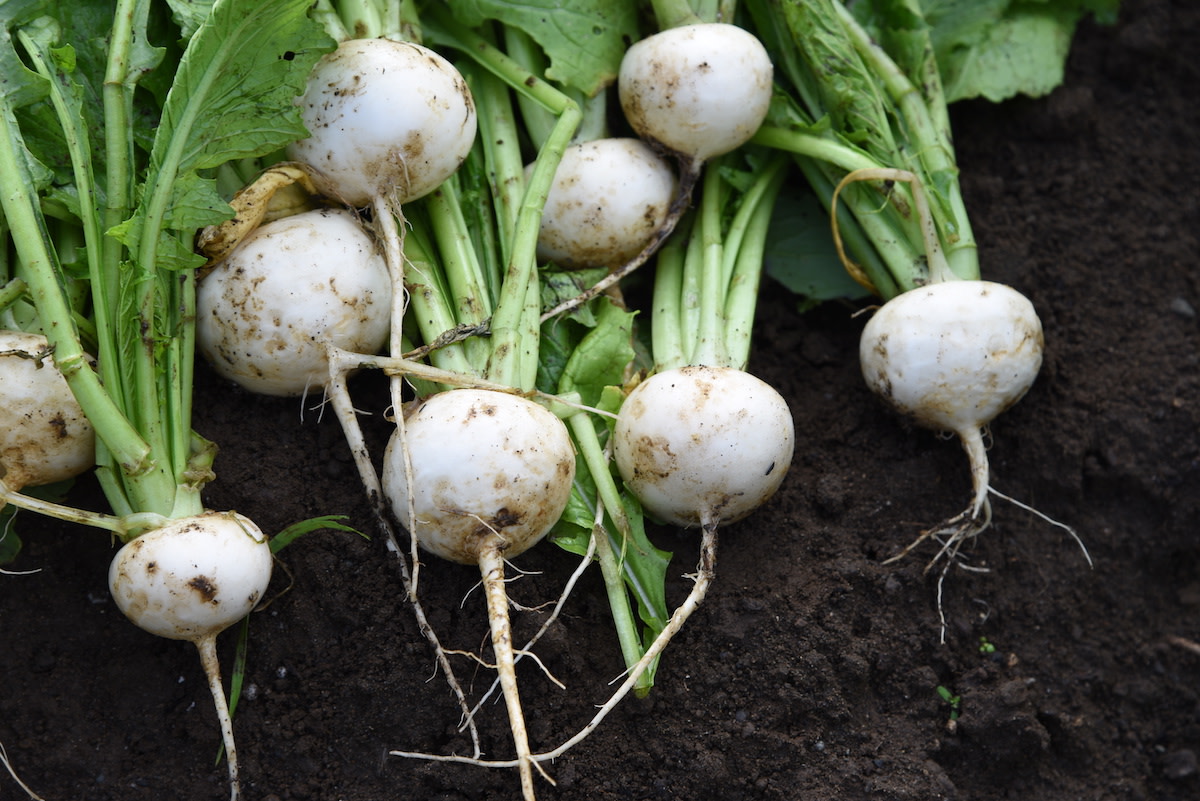How to Grow Turnips in Your Home Garden
Written by MasterClass
Last updated: Jun 7, 2021 • 3 min read
Turnips are root vegetables that belong to the Brassica rapa species along with napa cabbage, bok choy, bomdong, and rapini. Like other brassicas (rutabaga, parsnips, radishes, cauliflower, Brussels sprouts, and broccoli), turnips are a hardy vegetable that can handle cold weather.
Round and white with purple tops (where the root has been exposed to sunlight in its final stages of growth), turnips have crunchy flesh that tastes a bit like cabbage. Mildly spicy when raw, turnips turn sweet, nutty, and earthy when cooked. Raw turnips have a crisp, starchy flesh; cooked turnips turn soft and velvety.
Learn From the Best
How to Plant Turnips in Your Garden
Turnips flourish in temperate environments, making them a reliable crop in most parts of the world.
- Choose a season to plant your turnips. Turnips are traditionally a fall crop, but you can harvest them well into winter and spring. If you want to harvest your turnips in late spring, plant your turnip seeds two to three weeks before the last frost—they’ll be ready to harvest in 30 to 60 days. If you want to pick turnips in the fall, sow seeds in late summer. For a winter harvest, plant turnips in October or November, provided your region's winters are not extreme.
- Make sure the soil temperature is right. Turnips will grow as long as the temperature doesn’t drop below 10° Fahrenheit, and they can handle frost. Ideal soil temperatures for turnips range from 40 to 75° Fahrenheit.
- Sow seeds directly in your vegetable garden. Once a turnip is established, you shouldn’t transplant it, so place turnip seeds where you want them to grow. Plant turnips in an area that receives full sun (although they can also thrive in partial shade). Space your seeds about an inch apart, and cover them with roughly half an inch of garden soil.
- Thin turnip seedlings. When seedlings emerge, thin your crop to one turnip every four to six inches. (If you're only growing these plants for their turnip greens, you can keep them closer together—one plant every three inches.)
- Grow turnips with companion plants. Consider planting turnips alongside peas or bush beans, which make good companion crops.
How to Care for Turnips
Since turnips grow rapidly, make sure they're well cared for throughout their short growing season.
- Water turnips regularly. Keep the soil around turnips moist but never soggy.
- Fertilize after four weeks. Wait to fertilize your turnips until they’ve begun to mature—or, better still, add compost to the soil to ensure it’s rich with organic matter.
- Use mulch. Surround your turnips with a light layer of mulch to help the soil retain moisture.
- Keep an eye out for pests. Aphids and flea beetles can infest turnip greens. Wash away beetles with water from a hose. If aphids claim a section of turnip leaves, pinch or clip away that foliage to prevent the aphids from spreading. Turnips have hardy roots, but they occasionally fall prey to root maggots; these can be deterred by spreading diatomaceous earth around the plants.
How to Harvest Turnips
There are a few things to remember when harvesting turnips.
- Harvest greens as the turnips grow. If you're harvesting turnip greens, clip them once they've reached approximately 12 inches in length. Start with the outer leaves and work inward.
- Harvest in cold weather for sweeter turnips. Turnip plants also produce more sugars in cold weather. You can keep your turnips in the ground beyond a light frost for sweeter results. Like many root crops, turnips can even endure a hard freeze and come out sweeter than ever—but don’t leave them in the freezing ground too long.
- Use a slotted pitchfork to lift turnips out of the soil. A shovel will also work, but take care not to slice through the root vegetable itself.
Harvested turnip greens can easily hold up in a refrigerator for a week. The turnip roots themselves will last for two months in the refrigerator or five months in a cool, moist root cellar. You can also cook turnips, seal them in plastic bags, and freeze them.
Learn More
Grow your own food with Ron Finley, the self-described "Gangster Gardener." Get the MasterClass Annual Membership and learn how to cultivate fresh herbs and vegetables, keep your house plants alive, and use compost to make your community - and the world - a better place.
